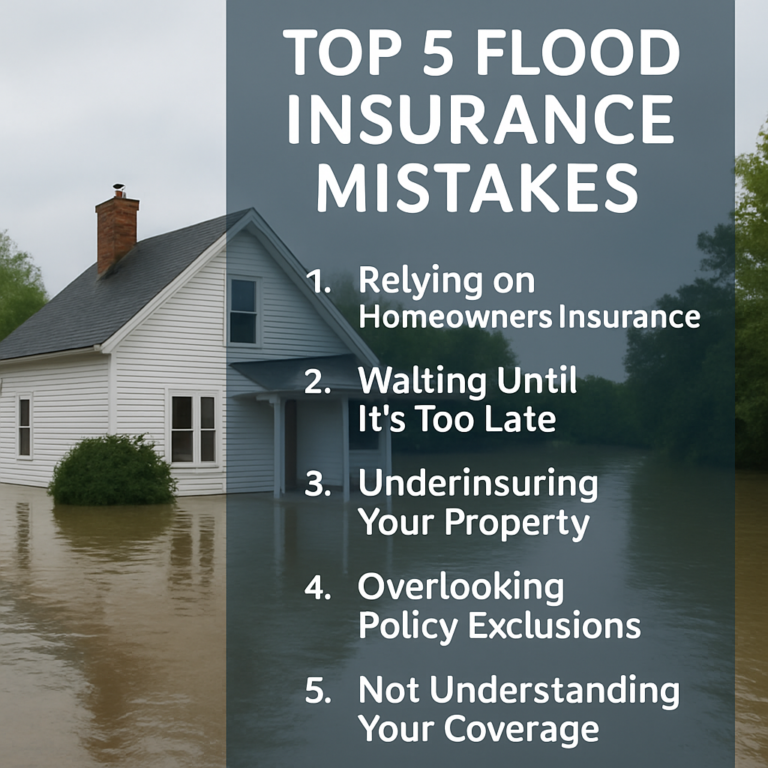My Mortgage Was Sold and Now Im Being Forced to Buy Flood Insurance What Are My Options?
Are you suddenly facing a flood insurance requirement for a property you’ve owned for years without one?
Wondering how a new lender can change the rules midstream—and what your options really are?
You’re not alone. Many real estate investors are caught off guard when their mortgage is transferred and the new servicer demands flood insurance—even for properties in low-risk areas. This comprehensive guide will help you understand why this happens, what legal rules are at play, and most importantly, what you can do to respond strategically.
You’ll learn:
You’re not alone. Many real estate investors are caught off guard when their mortgage is transferred and the new servicer demands flood insurance—even for properties in low-risk areas. This comprehensive guide will help you understand why this happens, what legal rules are at play, and most importantly, what you can do to respond strategically.
You’ll learn:
You’re not alone. Many real estate investors are caught off guard when their mortgage is transferred and the new servicer demands flood insurance—even for properties in low-risk areas. This comprehensive guide will help you understand why this happens, what legal rules are at play, and most importantly, what you can do to respond strategically.
You’ll learn:
You’re not alone. Many real estate investors are caught off guard when their mortgage is transferred and the new servicer demands flood insurance—even for properties in low-risk areas. This comprehensive guide will help you understand why this happens, what legal rules are at play, and most importantly, what you can do to respond strategically.
You’ll learn:
You’re not alone. Many real estate investors are caught off guard when their mortgage is transferred and the new servicer demands flood insurance—even for properties in low-risk areas. This comprehensive guide will help you understand why this happens, what legal rules are at play, and most importantly, what you can do to respond strategically.
You’ll learn:
- The federal regulations driving lender requirements
- How flood zone classifications impact your obligations
- A step-by-step action plan to verify, challenge, or comply
- Budgeting tips and long-term portfolio considerations
- Who you should work with to protect your investment
Let’s turn this unexpected cost into a strategic advantage.
Why Did the New Lender Require Flood Insurance?
Flood insurance mandates stem from federal law, not just lender preference.
When your loan is sold, the new lender inherits compliance duties dictated by the National Flood Insurance Program (NFIP) and the Flood Disaster Protection Act (FDPA). These laws require federally backed lenders to ensure flood insurance coverage for properties in Special Flood Hazard Areas (SFHAs).
So what changed? Likely, your new servicer has:
- Stricter compliance protocols
- Updated flood map monitoring
- More advanced risk modeling tools
They’re not picking on you—they’re complying with federal law and possibly catching up on missed requirements your old lender overlooked
What Flood Zone Is Your Property In?
Flood zones aren’t static—FEMA updates maps regularly, which can trigger new insurance obligations.
The most common zones:
- Zone AE: High-risk, base flood elevation known (mandatory coverage required)
- Zone A: High-risk, base flood elevation not determined
- Zone X: Moderate to low risk; insurance typically optional—but some private lenders now require it
You might also be in a flood zone due to:
- Mapping errors
- Inadvertent inclusions
- Community changes in NFIP participation
Always check FEMA’s Flood Map Service Center for your property’s latest designation
Your 7-Step Action Plan
Here’s how to regain control and protect your bottom line:
1. Verify the Flood Zone
Use FEMA’s website to confirm your property’s designation. If you find a mismatch, document everything—screenshots, addresses, dates.
2. Review Loan Docs and Servicer Letters
Look for existing flood insurance clauses or waivers. Note any deadlines for compliance and the possibility of force-placed insurance—which can be costly.
3. Assess Real Flood Risk
Gather elevation data, speak with local officials, and consider an Elevation Certificate (costs ~$500–$1,500). It may help you reduce or eliminate the requirement.
4. Shop for Coverage Smartly
Compare NFIP and private insurers. Look at:
- Premiums
- Coverage limits
- Rental income protection (important for investors)
- Waiting periods (NFIP=30 days; some private=none)
5. Challenge the Requirement if Justified
Submit a Letter of Map Amendment (LOMA) to FEMA if your property is incorrectly zoned. Most lenders will drop the requirement once FEMA approves.
6. Negotiate with Your Lender
Present evidence to the servicer’s risk or compliance department—not just frontline reps. A professional and well-documented request can make a difference.
7. Consider the Bigger Picture
Is this an isolated incident or a trend across your portfolio? Start tracking flood zones and insurance proactively for all properties.
What Will This Cost—and Can You Afford It?
Flood insurance premiums can range from hundreds to thousands annually.
Cost drivers include:
- Flood zone classification
- Property elevation
- Building age (pre-FIRM vs. post-FIRM)
- Desired coverage limits
Mitigation strategies:
- Use Elevation Certificates to lower premiums
- Explore private coverage for better pricing
- Adjust rents or budgets to absorb the cost
- Use an escrow reserve to handle future spikes
Tip: Include flood insurance costs in all future property underwriting—even if it’s not currently required.
Who Should You Have on Your Team?
Flood insurance is complex—build a bench of experienced pros.
Look for:
- Specialized insurance agents familiar with NFIP and private markets
- Surveyors who understand FEMA requirements
- Attorneys well-versed in real estate and insurance compliance
Bonus: Consider working with a broker who can bundle portfolio coverage across multiple properties
What Does the Law Say About Your Rights?
Federal law is clear:
- Lenders must enforce flood insurance for SFHAs
- They must notify borrowers about changes
- They must follow procedures for force placement
But you also have rights:
- To challenge incorrect flood determinations
- To receive clear notifications and timelines
- To escalate disputes to federal regulators if needed
Knowing the rules helps you protect your investment—and your wallet.
Conclusion: Turn Frustration into Financial Clarity
You bought a property. You did your homework. You didn’t expect this. But a new lender brought new rules—and now you’re facing a flood insurance mandate.
Now, you’re empowered. You understand the law. You know your options. You have a clear plan to verify, challenge, or comply—strategically.
Flood risk doesn’t have to be a threat. It can be a lever for smarter investing and better risk management. Use this moment to:
- Reassess your portfolio’s flood exposure
- Build better insurance partnerships
- Strengthen your long-term profitability
You’ve got this—and if you’re ready to protect your portfolio and get expert help sourcing the right coverage, your next step is simple: Get a Quote.
Wondering how a new lender can change the rules midstream—and what your options really are?
You’re not alone. Many real estate investors are caught off guard when their mortgage is transferred and the new servicer demands flood insurance—even for properties in low-risk areas. This comprehensive guide will help you understand why this happens, what legal rules are at play, and most importantly, what you can do to respond strategically.
Are you suddenly facing a flood insurance requirement for a property you’ve owned for years without one?
Wondering how a new lender can change the rules midstream—and what your options really are
Wondering how a new lender can change the rules midstream—and what your options really are?
You’re not alone. Many real estate investors are caught off guard when their mortgage is transferred and the new servicer demands flood insurance—even for properties in low-risk areas. This comprehensive guide will help you understand why this happens, what legal rules are at play, and most importantly, what you can do to respond strategically.
Are you suddenly facing a flood insurance requirement for a property you’ve owned for years without one?
Wondering how a new lender can change the rules midstream—and what your options really are?
Are you suddenly facing a flood insurance requirement for a property you’ve owned for years without one?
Information contained on this page is provided by an independent third-party content provider. This website make no warranties or representations in connection therewith. If you are affiliated with this page and would like it removed please contact editor @producerpress.com







